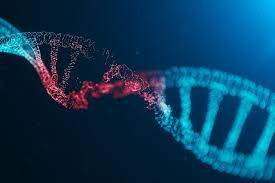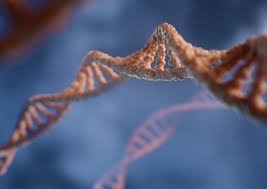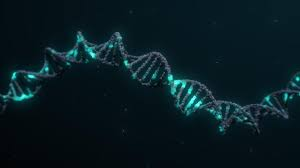Scientists Begin Work on Artificial Human DNA: 5 Key Developments in Synthetic Genome Researc
Building DNA from Scratch – A New Frontier in Human Biology
The Dawn of a Genomic Revolution
In an era where biotechnology is redefining the frontiers of science and medicine, a groundbreaking initiative is now underway to engineer human DNA entirely from scratch. Titled the Synthetic Human Genome Project, this ambitious undertaking is backed by a significant grant from the world’s largest medical charity, the Wellcome Trust, which has committed £10 million (approximately Rs 117 crore) to launch the initiative.
The project involves scientists from prestigious UK institutions, including the University of Oxford, University of Cambridge, Imperial College London, and other leading research organizations. Its long-term vision is transformative: to eventually construct an entirely synthetic human genome, marking a milestone that could reshape our understanding of biology, disease, and the very foundations of human life.
However, this scientific ambition comes at a complex ethical cost. As researchers work to replicate and eventually rewrite the genetic code that defines humanity, debates over bioethics, biotechnology commercialization, and the risk of misuse are intensifying.
The Science Behind the Mission: Understanding Synthetic DNA
At the core of the Synthetic Human Genome Project lies a deceptively simple yet monumentally complex goal: to create synthetic DNA that mimics human DNA but is designed and assembled entirely in the lab. DNA—or deoxyribonucleic acid—is the blueprint of life. It is composed of four basic chemical building blocks known as nucleotides, which form sequences that encode genes. These genes govern everything from hair color to immunity and organ function.
Traditional genome editing methods, like CRISPR, modify existing DNA. This project, however, aims to do something fundamentally different: build human chromosomes from the ground up, starting with basic chemical components.
As a proof of concept, scientists are initially focusing on synthesizing a complete human chromosome—representing roughly 2% of the human genome. If successful, this feat will validate the broader possibility of creating the entire genome artificially, a scientific frontier that has long existed in the realm of speculative fiction.
Research Leaders and Their Vision
Among the key figures spearheading this venture is Dr Julian Sale, a senior researcher at the MRC Laboratory of Molecular Biology in Cambridge. Speaking to the BBC, Dr Sale expressed his optimism about the therapeutic potential of synthetic DNA.
“The sky is the limit,” he said. “We are looking at therapies that will improve people’s lives as they age, that will lead to healthier ageing with less disease.”
Dr Sale elaborated on the possibility of using synthetic genomes to create disease-resistant cells. Such cells could be cultivated and used to repopulate damaged organs, potentially transforming treatment protocols for liver and heart disease, and even bolstering immune system functionality.
Professor Matthew Hurles, Director of the Wellcome Sanger Institute, emphasized the scientific significance of the project. According to Prof. Hurles, being able to build DNA from scratch enables researchers to move beyond the limits of studying DNA in living systems.
“Building DNA from scratch allows us to test out how DNA really works and test out new theories,” he stated. “Currently, we can only do that by tweaking DNA that already exists.”
The Ethical Conundrum: Are We Playing God?
Despite the project’s potential to revolutionize medicine, it has not been immune to criticism. A growing segment of scientists and ethicists warn that humanity may be treading into morally ambiguous territory.
Professor Bill Earnshaw, a prominent geneticist from Edinburgh University, who previously developed techniques to create artificial chromosomes, expressed concern about how rapidly such technology could be commercialized.
“The genie is out of the bottle,” Earnshaw warned. “We could have a set of restrictions now, but if an organization who has access to appropriate machinery decided to start synthesizing anything, I don’t think we could stop them.”
This concern reflects a deeper anxiety: that synthetic genome research, while currently framed within the boundaries of medical advancement, could be repurposed for harmful applications, whether in biowarfare, unethical genetic manipulation, or unregulated commercial practices.
Dr Pat Thomas, Director of the advocacy group Beyond GM, raised alarms about the dual-use nature of such technology. Though the stated intentions of most scientists are benevolent, history is replete with examples of scientific advancements repurposed for destruction.
“We like to think that all scientists are there to do good,” Dr Thomas remarked, “but the science can be repurposed to do harm and for warfare.”
Public Reaction: Hope, Fear, and Humor in the Digital Age
The announcement of the Synthetic Human Genome Project sparked a wave of reactions on social media, revealing a public that is both intrigued and uneasy. While some commentators expressed excitement about the medical possibilities, others viewed the initiative through a lens of skepticism, even satire.
One user quipped:
“Corporate grown employees coming soon. What a wonderful world we live in.”
Another sarcastically noted:
“Can’t see this going wrong in a sci-fi horror type way at all.”
But not all reactions were negative. A third user shared a personal reflection:
“This is so cool. I hated growing up with eczema. It would’ve improved my life so much to not have that issue.”
These contrasting responses underscore the duality of public sentiment—a mixture of optimism about scientific progress and concern over potential dystopian outcomes.

A New Epoch Begins
The Synthetic Human Genome Project represents a historic confluence of technological innovation, scientific ambition, and moral uncertainty. By attempting to build life’s fundamental code from the molecular level, the project carries the promise of transformative therapies and personalized medicine. Yet, it also invokes critical questions about who controls this knowledge, how it will be regulated, and what consequences may emerge if it is misused.
In Part 2 of this series, we will explore the technical processes behind synthetic DNA construction, delve deeper into the motivations of participating institutions, and assess existing international guidelines and gaps in regulating synthetic genome research.
As humanity ventures into this unprecedented era of genomic craftsmanship, the world watches closely—hopeful, wary, and utterly captivated.
From Code to Chromosome – How Synthetic Genomes Are Built
The Mechanics of Creating Life
In Part 1, we examined the motivations, goals, and early ethical concerns surrounding the Synthetic Human Genome Project, which has received £10 million (Rs 117 crore) in funding from the Wellcome Trust. Now, in Part 2, we turn our focus to the heart of the matter: how scientists are actually attempting to create human DNA from scratch.
Far from science fiction, this is a highly technical, meticulously calibrated endeavor involving chemical synthesis, computer modeling, genetic engineering, and advanced biotechnology. This section unpacks the techniques, technologies, and strategic frameworks enabling scientists to build synthetic chromosomes—one nucleotide at a time.
Understanding the Blueprint: The Role of the Human Genome
The human genome is a vast instruction manual, composed of more than 3 billion base pairs of DNA. These base pairs are arranged in a specific sequence across 23 pairs of chromosomes, and the sequence determines everything from cellular behavior to physical appearance and susceptibility to disease.
Each base pair consists of combinations of four nucleotides—adenine (A), thymine (T), cytosine (C), and guanine (G). These chemical components form the “letters” of life’s code. The Synthetic Human Genome Project aims not to edit these letters but to recreate large sections of them entirely in vitro, beginning with one whole chromosome.
Step One: Chemical DNA Synthesis
The first step in creating synthetic DNA is chemical synthesis, where nucleotides are assembled in a predetermined order. Unlike natural DNA, which is copied by cells through biological processes, synthetic DNA is constructed using automated synthesizers in controlled lab settings.
Short DNA fragments called oligonucleotides are assembled in batches and then joined together to create longer strands. These longer DNA segments—sometimes thousands of base pairs long—are then tested, corrected for errors, and pieced together like a jigsaw puzzle.
Due to current technological constraints, DNA synthesis remains limited by the length and accuracy of what can be reliably constructed. Therefore, modular design is essential: small, error-free segments are created and assembled into larger constructs.
Step Two: Assembly of Synthetic Chromosomes
Once long DNA strands are synthesized, the next phase is to assemble them into functional chromosomes. This is not merely a matter of fusing strands—it involves ensuring that the DNA:
- Can be transcribed (read by the cellular machinery),
- Can replicate correctly during cell division,
- Is biocompatible with living cells,
- And does not provoke immune rejection or toxicity.
To do this, researchers use yeast artificial chromosomes (YACs) or bacterial artificial chromosomes (BACs) as scaffolds. These tools allow the synthetic DNA to be stored, replicated, and studied inside living cells.
In the Synthetic Human Genome Project, scientists are focusing on one complete chromosome as a starting point, potentially chromosome 21, due to its relatively smaller size and association with Down syndrome—a possible future target for genomic therapy.
Step Three: Testing Synthetic DNA in Living Systems
Once the synthetic chromosome is assembled, it must be tested within living cells, often human stem cells or engineered pluripotent cells. The goal is to ensure that:
- The synthetic DNA is functional.
- It does not disrupt other cellular processes.
- It can express genes in the intended manner.
This testing stage is crucial. Even the most accurate DNA sequence may behave differently in the complex environment of a living cell. Researchers conduct multiple rounds of insertion, expression analysis, and genome editing to refine the synthetic constructs.
Advanced computational models simulate how the DNA will behave in vivo, helping guide the design of synthetic genes and regulatory elements before live testing begins.
Technological Backbone: AI and Automation
The scale and complexity of the Synthetic Human Genome Project would be impossible without automation and artificial intelligence. Machines now exist that can write DNA code, predict gene interactions, and test hypotheses without direct human input.
AI systems assist in:
- Identifying essential and non-essential genes.
- Designing codon-optimized sequences that function efficiently in human cells.
- Predicting how synthetic genes may affect protein folding, cellular pathways, or organ development.
Moreover, robotic systems handle high-throughput synthesis and testing, accelerating progress and reducing the likelihood of human error.
Quality Control and Error Correction
One of the greatest challenges in DNA synthesis is error correction. A single incorrect base pair can lead to misfolded proteins, disrupted genes, or failed replication. Researchers use several strategies for quality control:
- Sequencing and re-sequencing synthetic DNA to verify accuracy.
- CRISPR-Cas9 tools to correct mutations.
- Molecular barcoding to track individual DNA segments.
- Functional assays to test gene expression in vitro.
Every stage of the synthetic process is scrutinized under both bioinformatics pipelines and laboratory assays before a chromosome is declared viable.
Collaborators and Institutional Framework
The institutions leading this project are not working in isolation. A network of universities, private companies, and medical charities has been formed to pool resources, expertise, and ethical oversight.
The principal collaborators include:
- Wellcome Sanger Institute – Specializing in large-scale genomic data.
- MRC Laboratory of Molecular Biology – Leading biochemical and molecular analysis.
- Imperial College London – Innovating in synthetic biology and applied medicine.
- University of Oxford – Pioneering genome editing research.
- University of Cambridge – Focused on stem cell integration and epigenetic behavior.
These organizations are also part of global consortia such as the Genome Project–Write (GP-write), an international initiative to improve DNA synthesis capabilities and safety protocols.
Applications on the Horizon: Medicine, Immunology, and Beyond
The long-term vision for synthetic genomes includes a vast array of applications, many of which are already in development:
- Organ regeneration: Synthetic chromosomes could create cells that repopulate damaged tissues, such as liver or heart cells, eliminating the need for donors.
- Immune system engineering: Genetically designed white blood cells may be used to combat diseases like leukemia, HIV, and autoimmune disorders.
- Infectious disease resistance: Custom genomes may be used to create populations resistant to viral infections, including coronaviruses or influenza.
- Neurodegenerative therapy: Repairing or replacing faulty genes associated with Alzheimer’s, Parkinson’s, or Huntington’s disease.
Beyond medicine, synthetic DNA may also support biocomputing, data storage, and bio-manufacturing, introducing sustainable alternatives to industrial production.
International Regulations: The Governance Gap
As the science advances, governance struggles to keep up. There is currently no unified global framework regulating:
- The creation of synthetic human genomes.
- Their deployment in human embryos or adult therapy.
- Their commercialization by biotech corporations.
The project’s leaders are calling for transparent oversight, international collaboration, and bioethical guidelines. Proposed protocols include:
- Independent ethics review boards at each phase.
- UNESCO and WHO advisory roles on synthetic life.
- Restrictions on germline editing and reproductive applications until long-term studies are completed.
In the absence of clear international laws, the risk of unregulated applications—including designer babies, genetic discrimination, or biological warfare—remains a serious concern.

Engineering the Future, Carefully
The Synthetic Human Genome Project stands as one of the most audacious scientific efforts of the 21st century. What was once the realm of myth—the act of creating life from scratch—is now within the reach of human innovation.
Yet, with each strand of synthetic DNA assembled, the scientific community inches closer to unprecedented influence over the biological future of our species. The task is not merely technical—it is deeply philosophical, moral, and global.
Redesigning Humanity – Philosophical and Cultural Implications of Synthetic DNA
Science Meets the Soul
The Synthetic Human Genome Project represents more than a scientific endeavor; it marks a turning point in how humanity understands itself. In previous parts of this series, we explored the project’s scientific scope, its techniques, and its revolutionary potential in medicine and biotechnology. Now, in Part 3, we shift the lens to examine the philosophical, religious, and cultural ramifications of building synthetic human DNA.
What does it mean to “design” a human being? At what point does scientific creation edge into spiritual territory? And how will different societies, religions, and cultures respond to the notion of synthetic life? As synthetic biology moves from the lab to the clinic—and possibly, to the womb—the questions are no longer just technical. They’re existential.
A Philosophical Crossroads: Redefining Life Itself
For centuries, humanity has grappled with the boundaries of what constitutes life. With synthetic genomics, those boundaries are no longer fixed. We are now capable of assembling life’s blueprint without a natural template, challenging the classical understanding of natural vs. artificial, life vs. machine, and creator vs. creation.
Philosophers are increasingly calling attention to a core issue: ontological destabilization. In simple terms, the project forces us to confront a world where the line between “born” and “made” is blurred.
Dr. Christine Dombrowski, a bioethicist at the European Council on Human Dignity, describes this shift:
“For the first time in history, the essence of being human is not determined solely by evolution, chance, or divine will—it is becoming programmable. This fundamentally alters how we perceive human worth and uniqueness.”
The very idea of human identity becomes fluid. If life can be designed for enhanced traits—immunity, intelligence, longevity—then what becomes of natural diversity? Will there be a future distinction between synthetic and organic humans, and if so, what ethical implications arise?
Religious Interpretations: Between Creation and Creator
Across religious traditions, life is not only biological—it is sacred. Many faiths regard human life as the result of divine design or cosmic order. The Synthetic Human Genome Project, by introducing a man-made version of that design, invites theological debate.
Christian Perspectives
In Christianity, particularly in Catholic and Orthodox traditions, the creation of life is seen as a divine prerogative. The Vatican has repeatedly emphasized the need to preserve human dignity and oppose any scientific practice that instrumentalizes life.
In 2024, following the announcement of expanded synthetic genome projects, the Pontifical Academy for Life issued a cautionary statement:
“Human beings must never become the object of manufacturing. Every life must emerge from love and dignity, not from design and assembly.”
Yet some progressive Christian scholars argue that if synthetic DNA can alleviate suffering, it may be viewed as co-creating with God—a concept rooted in stewardship theology.
Islamic Perspectives
In Islam, human creation is sacred and governed by divine decree. However, Islamic bioethics allows room for innovation if it serves public welfare (maslaha) and adheres to Sharia principles.
Sheikh Omar Al-Fahmi, a theologian at Al-Azhar University, commented:
“Synthetic DNA must be evaluated not in isolation, but through intention and outcome. If it restores health without violating moral law, it may be permissible. But any attempt to alter the human soul or lineage is not acceptable.”
The key concern in Islamic discourse remains the preservation of lineage (nasab), particularly if synthetic genomes are introduced into the germline or reproductive process.
Hindu and Buddhist Views
In Hinduism, life and the soul (Atman) are eternal, cycling through rebirth. The physical body is seen as a temporary vessel. This may offer greater metaphysical flexibility for synthetic biology, provided karmic laws and ahimsa (non-harm) are respected.
Buddhism, particularly in its Mahayana tradition, focuses on intention, suffering, and compassion. If synthetic genomes reduce suffering and are developed with right intention, they may be ethically justifiable.
Yet both traditions raise concerns about attachment to perfection, warning that engineering life may lead to greater suffering, not less, by creating disparities and unnatural desires.
Cultural Concerns: Who Gets to Design?
Beyond religion, cultural identity plays a major role in how societies react to synthetic life. There is a growing concern that genome design could lead to cultural homogenization, favoring Western standards of health, beauty, and intelligence.
Imagine a future where embryos are edited to have preferred traits: lighter skin, taller height, specific cognitive abilities. Would this reinforce racial, economic, or national biases? Could it accelerate genetic class systems?
Dr. Minako Saito, a sociologist at Kyoto University, writes:
“The global South could become a testing ground for genetic trials, while the global North commercializes and controls the technology. This risks deepening both bio-colonialism and eugenics.”
Furthermore, traditional indigenous and tribal communities—who often regard human life as interconnected with land, ancestry, and spirit—may reject synthetic human projects outright, fearing a severance from natural order.
Social Stratification: The Rise of the “Genobility”?
One of the most alarming prospects discussed by ethicists is the potential emergence of a “genobility”—a genetically enhanced class of humans designed for higher intelligence, strength, or disease resistance. This idea, once relegated to dystopian fiction, is now a genuine social fear.
What happens when only wealthy individuals or nations can afford synthetic enhancements? Will genetic privileges replace, or compound, economic privileges? Will naturally born humans be seen as “lesser”?
Even within democratic frameworks, the commercialization of synthetic genomes could reshape access to opportunity, creating “bio-inequality” in education, healthcare, and employment.
The Consent Dilemma: Whose Future Is It Anyway?
Another pressing concern is consent. Future individuals created using synthetic DNA have no say in the matter. If something goes wrong—psychologically, socially, biologically—who bears responsibility?
As Dr. Harriet Nguyen, a legal scholar at King’s College London, observes:
“We are making decisions on behalf of persons not yet born, giving them a body and mind we designed. That raises profound questions of rights, agency, and personhood.”
Should individuals born through synthetic genomes have legal recourse if the procedure caused suffering? Should international laws protect their right to be natural, or at least, their right to know how they were made?
Public Imagination: Between Fear and Wonder
Popular culture has long reflected society’s hopes and anxieties around synthetic life. From Mary Shelley’s Frankenstein to Aldous Huxley’s Brave New World, and more recently, films like Gattaca or Ex Machina, the public imagination continues to be both enthralled and alarmed.
Social media reactions, too, reflect this tension—ranging from sarcastic memes about “corporate-grown employees” to heartfelt posts envisioning a future without genetic diseases like eczema, cancer, or ALS.
This mix of satire, awe, and skepticism suggests that societal trust in science is not merely about facts—it hinges on transparency, regulation, and the assurance that innovation will serve humanity, not dominate it.
Humanity Rewritten
As the Synthetic Human Genome Project moves forward, it is rewriting not only our DNA but our understanding of what it means to be human. Religion, philosophy, and culture are being forced to keep pace with a science that challenges sacred narratives and civilizational norms.
For some, this is a renaissance—a moment of human empowerment and boundless potential. For others, it is a warning—an irreversible step toward biological inequality, moral ambiguity, and the loss of natural humanity.

Law and Limits – The Legal Framework for Synthetic Genomics
Regulating the Blueprint of Life
As science accelerates beyond the bounds of imagination, law and governance find themselves racing to catch up. In Part 3, we explored the profound philosophical, religious, and cultural implications of building synthetic human DNA. In this installment, Part 4, we shift our focus to the urgent need for legal frameworks, international policies, and governance structures capable of overseeing this revolutionary technology.
The Synthetic Human Genome Project—launched with funding from the Wellcome Trust and involving institutions like Oxford, Cambridge, and Imperial College—is no longer a mere experiment. It is a scientific enterprise with real-world potential: to create cells, tissues, and eventually humans from wholly artificial DNA. But who will decide the rules for this future?
The Legal Vacuum: A Dangerous Precedent
Despite the staggering implications of synthetic genomics, there is currently no globally binding legal framework governing:
- The creation of synthetic human DNA.
- The use of synthetic genomes in embryos or human trials.
- The patenting or commercialization of synthetic life.
- Cross-border transfer of synthetic genetic materials.
This absence has led many scholars and policymakers to warn of a “regulatory vacuum”, in which national and corporate actors operate according to self-defined standards, risking misuse, ethical violations, and inequity.
Dr. Anita Rao, a constitutional lawyer and biotech policy advisor in India, summarizes the problem succinctly:
“We are rewriting biology with 20th-century laws. Synthetic genomics sits in a grey zone between biotechnology, human rights, intellectual property, and international trade. No one jurisdiction has full control, and no global consensus exists.”
Key Legal Domains Affected by Synthetic Genomics
To understand the scope of the legal challenge, we must examine how synthetic genomics intersects with various branches of law:
1. Human Rights and Bioethics
- Right to Life: Should synthetic humans, once viable, be granted full human rights under international conventions?
- Right to Genetic Integrity: Do future generations have a right not to be designed?
- Right to Consent: Can future individuals sue for being created with traits they didn’t choose?
2. Reproductive and Family Law
- If synthetic chromosomes are inserted into human embryos, what legal status does such an embryo hold?
- Will there be a legal distinction between natural birth and synthetic birth?
- Can synthetic embryos be patented, owned, or commercialized?
3. Patent Law and Intellectual Property
- Current patent laws allow for gene sequence patents and genetic modification tools. But can entire synthetic chromosomes be patented?
- Could companies own parts of the human genome?
- Would this lead to biological monopolies?
4. Criminal Law and National Security
- Could the creation of synthetic life be weaponized?
- Should there be international criminal penalties for unauthorized synthetic human experiments?
- What happens if a synthetic genome is hacked or altered maliciously?
Global Regulatory Attempts So Far
Several international bodies have attempted to address the bioethical and legal issues of genetic research—but few specifically address synthetic DNA or full-genome synthesis.
1. UNESCO’s Universal Declaration on the Human Genome and Human Rights (1997)
- Declares the human genome as “the heritage of humanity”.
- Opposes discrimination based on genetic characteristics.
- But does not address synthetic genomes or artificial DNA.
2. WHO Committee on Human Genome Editing (2021–present)
- Focuses on regulating gene editing in human embryos.
- Recommends a global registry of gene-editing experiments.
- Does not yet regulate synthetic genome construction from scratch.
3. Cartagena Protocol on Biosafety (2000)
- Aims to regulate genetically modified organisms (GMOs).
- Applied mostly to crops and microbes—not to human genomic synthesis.
- Unclear whether synthetic humans would fall under its jurisdiction.
4. National-Level Laws
- UK: The Human Fertilisation and Embryology Act restricts embryo research beyond 14 days, but lacks provisions for synthetic genomes.
- USA: The FDA and NIH regulate gene therapy, but do not yet directly regulate non-editing synthetic genomics.
- China: Rapid growth in biotech with limited transparency has led to concerns over ethics enforcement.
- India: The Department of Biotechnology (DBT) regulates genetic testing, but no specific law governs synthetic genome projects.
The Role of the Private Sector: The Patent Gold Rush
As academic researchers pioneer synthetic genome design, private companies are quickly recognizing the commercial potential.
- Biotech firms are already applying for patents on synthetic sequences, designer cells, and programmable chromosomes.
- Patent trolls—entities that acquire rights to genetic patents for the purpose of litigation—are entering the field.
- This has triggered fears of a future in which parts of the human genome, or synthetic analogues, are privately owned, turning human life into intellectual property.
In 2024, a US-based company, GeneFactor Inc., attempted to patent a synthetic chromosome designed to correct cystic fibrosis. The application was initially rejected under “natural law” principles but is currently under appeal in the US Court of Appeals for the Federal Circuit.
Proposed Legal Models for the Future
Several international organizations, scholars, and think tanks have proposed models for global governance of synthetic genomics.
1. The Synthetic Genome Treaty (SGT)
- Proposed by the European Council on Biolaw.
- Would establish a binding international treaty on the creation and use of synthetic human DNA.
- Prohibits the creation of fully synthetic embryos without UN oversight.
2. The BioIntegrity Protocol
- Suggested by Indian and African bioethics researchers.
- Emphasizes genomic dignity, protection from discrimination, and equitable access to synthetic therapies.
- Calls for mandatory licensing of all synthetic genomes to ensure affordability.
3. Global Registry and Surveillance Authority
- Recommended by the World Health Organization (WHO).
- Creates a real-time international registry of synthetic genome research and commercial applications.
- Allows global peer oversight to prevent misuse.
Voices of Warning and Advocacy
Prominent figures in science and law are raising concerns over the current regulatory gap:
Professor Bill Earnshaw, geneticist at Edinburgh University:
“The genie is out of the bottle. We could have a set of restrictions now, but if someone with access to the right technology decided to create something dangerous, I don’t think we could stop them.”
Dr. Pat Thomas, director of Beyond GM:
“Science always outpaces regulation. But when you’re creating life, you cannot afford that lag. One mistake could rewrite our species.”
At the same time, advocates stress the need for balanced policy:
Professor Matthew Hurles, Wellcome Sanger Institute:
“We must regulate, yes—but we must not strangle innovation. The same science that can be misused can also save millions of lives.”
The Indian Perspective: Regulation in a Rapidly Evolving Biotech Nation
India’s scientific institutions are active participants in genetic research, but policy on synthetic human genomes remains nascent. The Department of Biotechnology (DBT), Indian Council of Medical Research (ICMR), and Ministry of Health and Family Welfare are yet to draft a national bioethics law addressing synthetic DNA.
Experts are calling for a National Synthetic Biology Commission, much like India’s Space Commission, to:
- Draft legal codes on synthetic genome research.
- Oversee patenting and commercialization.
- Promote indigenous research while preventing bio-exploitation.
The Urgency of Governance
The Synthetic Human Genome Project is not science in isolation—it is science with direct consequences for society, law, and global equity. Without legal safeguards, this promising technology risks becoming a playground for corporate interests, a threat to human rights, or a catalyst for global bio-conflict.
As we inch closer to the possibility of synthetic humans, humanity must make a collective choice: regulate responsibly, or face unintended consequences.

Futures Forged in the Lab – Scenarios of a Synthetic Tomorrow
Introduction: Standing at the Threshold of the Post-Natural Era
As the Synthetic Human Genome Project pushes forward—fueled by cutting-edge research and funded by the Wellcome Trust—humanity now stands at the threshold of a world redefined by artificial life. In Parts 1 to 4 of this series, we traced the project’s scientific ambitions, technical methodologies, cultural and religious reactions, and the pressing legal vacuum surrounding its development.
Now, in this concluding section, we explore a critical question: What happens next? What might the world look like when synthetic human DNA becomes commonplace? How might health, identity, politics, and society be transformed by synthetic biology? Part 5 envisions multiple possible futures—utopian, dystopian, and everything in between.
These scenarios are not speculative fiction. They are grounded in real scientific trajectories, expert warnings, and economic trends. Each path reflects choices—some we are making now, others we may soon be forced to confront.
Scenario 1: The Biomedical Utopia – A Future Without Genetic Disease
In the most hopeful vision of the future, synthetic DNA becomes a public good, equitably accessible to all nations and communities. Disease-resistant cells created using synthetic chromosomes replace damaged tissues and organs. Rare genetic disorders—from cystic fibrosis to sickle cell anemia—are eliminated before birth through preimplantation synthetic therapy.
Hospitals carry bio-printing facilities where personalized synthetic stem cells are used to regenerate failing livers, restore nerve function, or rebuild bone marrow after chemotherapy. Age-related diseases decline, extending not just life span but health span. In this future:
- Human health is predictive, preventive, and programmable.
- Therapies are affordable and universally distributed, backed by a global health fund.
- Synthetic biology becomes a key pillar in addressing climate change, through engineered humans with higher heat or radiation resistance.
Ethical oversight, global treaties, and transparent innovation ensure that science does not outpace humanity. The line between natural and synthetic blurs—not in fear, but in harmony.
Scenario 2: The Genetic Aristocracy – Birth of the Engineered Elite
In this darker scenario, synthetic genomics becomes the privilege of the wealthy. Designer DNA becomes a status symbol. Elite families edit their unborn children with superior intelligence, beauty, athletic ability, and disease resistance. Meanwhile, the naturally born—dubbed “Unmods” in public discourse—are increasingly marginalized.
In education, workplaces, and healthcare, a two-tier society emerges. Those with synthetic enhancements dominate leadership, innovation, and wealth accumulation. Natural-born individuals struggle to compete in a world built for genetic superiority.
By 2040:
- Some governments introduce “Geno-quota” laws to preserve social diversity, triggering international tensions.
- Migrant crises shift from economic and climate refugees to “genomic refugees”—families fleeing regimes that forcibly alter children or deny enhancements.
- The gap between North and South widens as Western firms patent and control access to genomic design platforms.
Critics call this the rise of “Genobility”, a synthetic aristocracy where nature is no longer the great equalizer, but the great divider.
Scenario 3: The Bio-Surveillance State – Control Through Code
In this scenario, synthetic genomics becomes a tool for state control. Authoritarian regimes use genome design to suppress dissent, enforce conformity, or engineer loyalty. Synthetic DNA becomes not just therapeutic—but political.
Citizens are monitored at the molecular level. Embryos are screened for “desirable” traits. Governments deploy bio-ID systems that require a synthetic genome scan for access to work, education, or travel. Corporations and states form alliances to create proprietary citizen classes.
By 2050:
- Countries compete not in arms races but in genome races—developing designer soldiers, hyper-intelligent diplomats, or population-level mental health regulation.
- Religious and ethnic minorities are targeted under the guise of “genomic optimization.”
- Whistleblowers and gene dissidents go underground, forming “naturalist resistance networks.”
This dystopia is the mirror image of synthetic biology’s potential: a technology of liberation turned into an instrument of domination.
Scenario 4: The Collapse Scenario – Science Without Stewardship
In this apocalyptic future, synthetic genome projects go unchecked. Without robust oversight, rogue labs and corporations begin experimenting with artificial genomes in embryos, animals, and microbes, leading to unforeseen ecological and medical catastrophes.
Synthetic microbes escape containment, disrupting food chains or spreading untraceable diseases. Attempts to use synthetic DNA to “upgrade” human traits trigger epigenetic chaos in the population—unexpected cancers, neurodegeneration, or autoimmune collapse.
By 2060:
- Nations scramble to ban genome tech, but black markets flourish.
- “Ghost citizens”—humans with undocumented synthetic genomes—proliferate across borders, unrecognized by health or legal systems.
- Insurance companies deny coverage to individuals with unknown genome origins.
- Religious leaders call for a return to “natural humanity,” while extremist groups target synthetic individuals in hate-driven purges.
In this scenario, science is not the villain—but the victim of hubris and negligence.
Scenario 5: The Balanced Evolution – Humanity Reimagined, Ethically
In this moderated vision, the world takes a middle path. Recognizing both the risks and the promise, nations come together to form the Global Genomic Accord, a binding treaty that:
- Bans full-synthetic reproduction until safety is proven over generations.
- Establishes a UN Superagency to monitor genome engineering.
- Creates international bioethics tribunals with real enforcement power.
- Requires all synthetic therapies to be open source and affordable.
Meanwhile, a new philosophy of “Post-Natural Humanism” emerges—acknowledging that while biology is now editable, ethical boundaries must be biologically embedded. Scientists design “fail-safe genes” that prevent overreach. Public education campaigns demystify synthetic biology, empowering citizens to make informed choices.
By 2070:
- Synthetic cells cure blindness, reverse paralysis, and regenerate coral reefs.
- Human dignity is defined not by origin—natural or synthetic—but by shared rights and responsibilities.
- A child born from synthetic chromosomes is welcomed not as a threat, but as a mirror of our values, not our vanity.
The Role of Today’s Choices: Forks in the Road
The future is not predetermined. Every scenario depends on decisions being made now:
- Will governments regulate synthetic DNA or leave it to market forces?
- Will global institutions collaborate or compete in secret?
- Will public education rise to meet the complexity of synthetic genomics?
- Will we define human rights broadly enough to include the synthetically born?
As Dr. Julian Sale of the MRC Laboratory said:
“The sky is the limit. But so is the fallout, if we don’t build this future with wisdom.”
Conclusion: Beyond the Genome – Toward Genomic Stewardship
The Synthetic Human Genome Project is not merely a scientific milestone. It is a civilizational inflection point. The ability to construct life from code places us in unprecedented territory—not just as observers of nature, but as its architects.
And with such power comes an even greater burden: the need for genomic stewardship. We must ask not only what we can do, but why we are doing it—and for whom.
In the end, the future of synthetic genomics will not be determined by laboratories alone. It will be shaped by ethics, law, culture, faith, and collective imagination.
Humanity has rewritten nature before—through agriculture, industry, and computation. But this time, the text we rewrite is ourselves.
Also Read : 5 Powerful Forces Transforming Earth’s Seismic Landscape Through Climate-Driven Crustal Shifts








